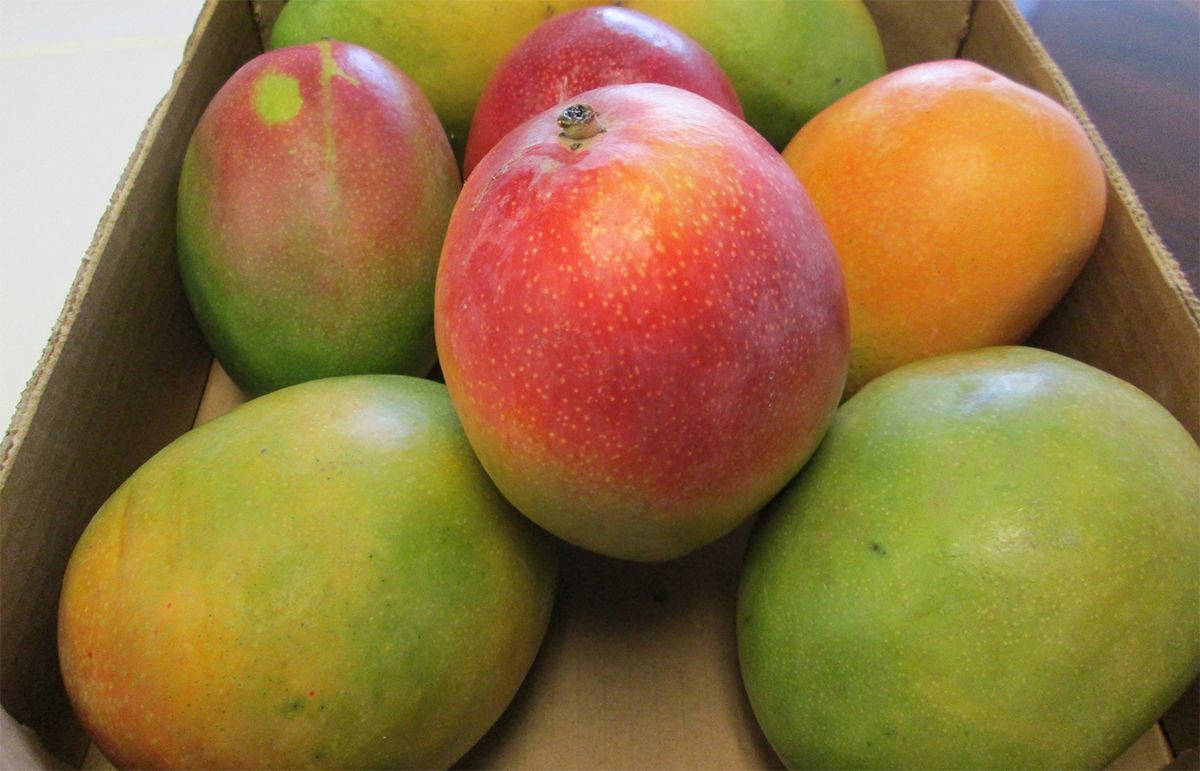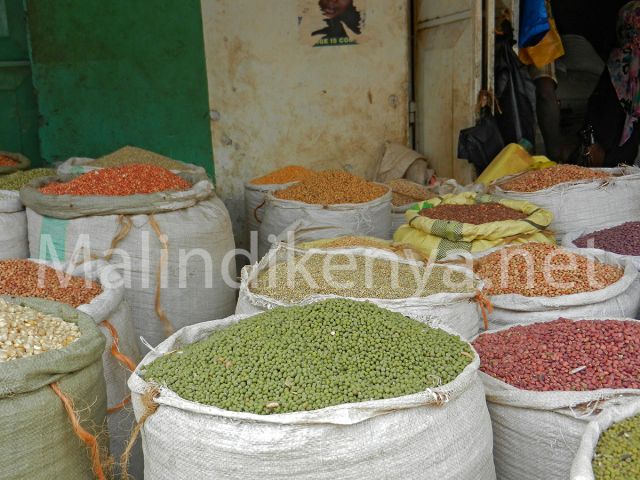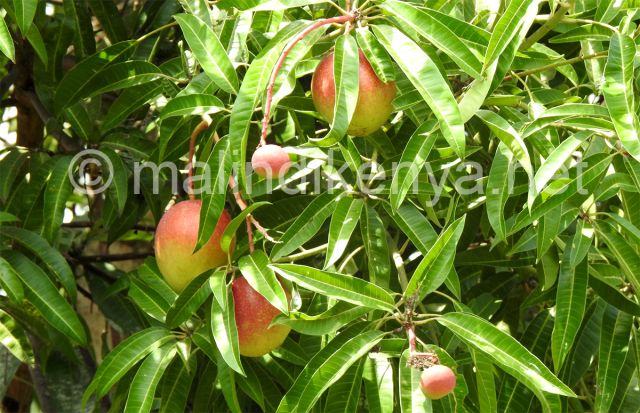
Fruits
19-03-2023 by Leni Frau

If life in Kenya is sweet, part of the credit goes to the fruit, and the mango is certainly one of the most representative and good fruits of this land.
While the sweet, pulpy fruit can be found in many equatorial and tropical areas of the world, that of Kenya and Tanzania is very special.
There are many kinds of mangoes. There are more than 400 in India alone.
Even in Kenya there are several, the easiest to find on market stalls are five.
Ngowe - harvest November - March
This is the mango par excellence, the one commonly found at the market or in every fruit shop. Sweet and juicy.
This quality is the oldest cultivated on the coast, imported from Zanzibar.
Apple mango ( apple mango ) - harvest season from December to early March
It originates on the coast of Kenya, more precisely around the Malindi area. The fruits are medium to large, almost round in shape, and the skin is red. Particularly sweet and juicy
Boribo - harvest season January and February
Tree cultivated exclusively in the Malindi area. The fruit is somewhat smaller than the other varieties, pale olive green in colour. The flesh is juicy and has a strong, intense mango flavour.
Batawi and Dodo are the other two qualities from Kenya and in particular from the Malindi-Kilifi area.
The mango (scientific name Mangifera indica) is a tropical plant belonging to the Anacardiaceae family.
Originally from India, it was also spread to Africa and Latin America by the Portuguese.
Mango trees are long-lived and large; they can live to be 300 years old and far exceed 30 m in height. The mango is an evergreen.
The fruit is ovoid, its flesh is yellow/orange, compact, very fragrant and tasty.
Its skin can take on different shades depending on the species: green, yellow, red or a mix of these colours.
The mango consists of approximately 82 % water, 1 % protein, carbohydrates, 1.6 % dietary fibre, 12.6 % sugars and 0.2 % fat.
The sugars are divided into fructose, glucose and sucrose, while the colour of the mango is mainly due to the abundance of beta-carotene, which accounts for most of the carotenoids.
These minerals include calcium, sodium, phosphorus, iron, magnesium, potassium, copper, manganese and zinc.
There is a fair amount of vitamins, in particular vitamin A, whose daily requirement of our body would be satisfied by the consumption of a whole mango.
In addition to vitamin A, we find vitamins B1, B2, B5, B6, B9, vitamin K, C and E. Amino acids are also well represented, the most abundant being arginine, lysine, aspartic acid, leucine and serine.
Due to its high content of trace elements, the mango is a fruit with mild laxative and diuretic properties; it is therefore a very suitable food for those with constipation and water retention problems.
Mangoes can also be used to cure coughs and colds by boiling their peel in water and drinking it warm three times a day for a week. The peel is rich in phytonutrients, antioxidants, carotenoids and polyphenols.
Thanks to the properties of the substances it contains, the mango is also an excellent restorative in cases of convalescence or periods of great physical stress.
The presence of vitamin A and flavonoids such as beta-carotene benefits the eyesight and skin while potassium, which is present in good quantities, is an important component of cells and body fluids and contributes to the control of heart rate and blood pressure.
There are several studies suggesting that increased consumption of plant foods such as mango can reduce obesity and the risks of developing asthma.
Its caloric value is low, in fact, every hundred grams of pulp has a calorie yield of 53 kilocalories.
Unripe mangoes are often used cooked to make chutneys (a spicy, thick vegetable sauce), pickles and various side dishes; ripe and raw mangoes are excellent with chilli or soy sauce.
The preserved unripe mango can be found dried and pulverised, as well as in jars (in oil, pickled, pickled in spirit). Mangoes are widely used in the production of fruit juices, nectars, flavourings, ice creams and sorbets.
There are many types of mango in the world. In India alone, there are more than 400. Even in Kenya there are several, the easiest to find on market stalls are five.
Ngowe - harvest November - March
This is the mango par excellence, the one commonly found at the market or in every fruit shop. Sweet and juicy.
This quality is the oldest cultivated on the coast, imported from Zanzibar.
Apple mango ( apple mango ) - harvest season from December to early March
It originates on the coast of Kenya, more precisely around the Malindi area. The fruits are medium to large, almost round in shape, and the skin is red. Particularly sweet and juicy
Boribo - harvest season January and February
Tree cultivated exclusively in the Malindi area. The fruit is somewhat smaller than the other varieties, pale olive green in colour. The flesh is juicy and has a strong, intense mango flavour.
Batawi and Dodo are the other two varieties from Kenya and in particular from the Malindi-Kilifi area.
RECIPES
by redazione

Chutney is a typical sweet-and-sour British sauce made with fruit or green tomatoes. It is excellent as a sauce for flavouring meat and fish foods.
The British took her to Kenya during colonialism and tried the variants with exotic fruit. Here...

Another mouthwatering recipe from the portal of Italians in Kenya. Today we present the...
RECIPES
by redazione

Kenya's Swahili cuisine, as we know, is a mixture of the cultures and peoples that have landed on the coast, and the products of the territory they have learned to use. The example is provided by the use of coconut...
NEWS
by redazione

The Ministry of Trade and Industry of Kenya has decided to close all shops selling retail products or materials...
FOOD
by Leni Frau

So sweet, so good, with its different varieties and at the equator, like the apple, it can keep some doctors...
RECIPES
by redazione

Fish chunks in mango sauce.
It is a Swahili recipe particularly used in Malindi and on the coast of Kenya, where there are plenty of plants of this delicious tropical fruit.
Here is for you the recipe of malindikenya. net
NEWS
by redazione

Kenya will be one of the protagonists of the 39th edition of Macfrut, the global exhibition dedicated to...
DISHES
by Freddie del Curatolo

For a few years now, in the sphere of creative gastronomy that tastes of summer, vacations and healthy...
NEWS
by redazione

Three suppliers of products and services of an Italian tour operator in Watamu have approached...


In Kenya, potatoes are particularly tasty.
The local population loves them fries, so much so that they are the ideal side dish of the national dish, the "nyama choma" (meat grilled almost toasted).
But there are many other ways of...